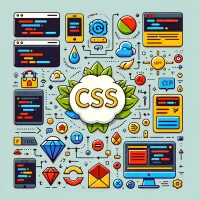Introduction
 In web design, CSS (Cascading Style Sheets) is a powerful tool for enhancing the visual appeal of your website. However, improper use of CSS can confuse search engines and negatively impact your SEO efforts. Understanding how to use CSS effectively ensures that your website remains both visually appealing and search engine friendly.
In web design, CSS (Cascading Style Sheets) is a powerful tool for enhancing the visual appeal of your website. However, improper use of CSS can confuse search engines and negatively impact your SEO efforts. Understanding how to use CSS effectively ensures that your website remains both visually appealing and search engine friendly.
This guide will explore best practices for using CSS to enhance user experience without compromising your site’s SEO. By following these techniques, you can create a visually stunning website that also ranks well in search engine results.
Table of Contents
What is CSS?
CSS, or Cascading Style Sheets, is a stylesheet language used to describe the presentation of a document written in HTML or XML. CSS defines how elements should be displayed on the screen, including layout, colors, fonts, and other visual aspects. It separates content from design, allowing for more flexibility and control in the specification of presentation characteristics.
Importance of CSS in Web Design
CSS is crucial for web design as it enhances the overall user experience by making websites more visually appealing and easier to navigate. Proper use of CSS ensures that your website looks professional, is accessible, and performs well across different devices and screen sizes. Additionally, a well-designed site can improve user engagement and retention.
Best Practices for CSS
-

Maintain a Clean and Organized CSS Structure: Use consistent naming conventions, avoid inline styles, and comment your code for clarity.
- Use External Stylesheets: Keep your CSS in external files to reduce page load times and improve maintainability.
- Optimize CSS for Performance: Minimize and compress your CSS files to enhance loading speed.
- Ensure Cross-Browser Compatibility: Test your CSS across different browsers to ensure consistent presentation.
- Implement Responsive Design: Use media queries to ensure your site is accessible on all devices and screen sizes.
Have a read about How to Use Heading Tags for SEO Best Practices.
CSS and SEO
While CSS is essential for visual styling, it’s important to use it in a way that does not interfere with SEO. Here are some best practices for using CSS without compromising SEO:
-

Avoid Hiding Content: Ensure that important content is not hidden from search engines by using display:none or similar properties.
- Minimize CSS Use for Text Styling: Use semantic HTML elements for headings, paragraphs, and lists to ensure search engines can understand your content structure.
- Optimize Loading Speed: Use CSS to create a fast-loading site, as page speed is a crucial ranking factor for search engines.
- Maintain Clear Code: Write clean and readable CSS code to avoid rendering issues that might confuse search engines.
By following these guidelines, you can create a visually appealing website that also performs well in search engine rankings, ensuring a balance between aesthetics and functionality.
Conclusion
CSS is a powerful tool for enhancing the visual appeal of your website, but it’s essential to use it correctly to avoid confusing search engines. By following best practices and optimizing your CSS, you can create a site that is both visually stunning and SEO-friendly. For more tips on optimizing your website for search engines, contact RedShaw Consulting today.




